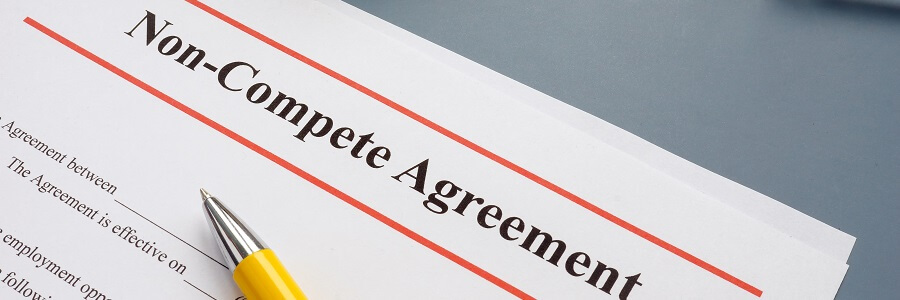Employee Turnover vs. Attrition: The Differences SMBs Should Know

Quick look: Some of the biggest misconceptions about employee attrition and employee turnover are that they’re the same—and that employers have little control over either. But that couldn’t be further from the truth. Let’s look at how the two differ, their causes, what’s involved in calculating their rates, and how partnering with a PEO can help lower turnover and increase engagement.
Very few people begin and end their careers with the same company, so ultimately employee departure is inevitable. In fact, more than 4 million Americans quit their jobs between July and November 2022. Additionally, Gartner predicts that the business sector could see a turnover rate of almost 24% in the coming years. While these numbers seem bleak, there’s a light at the end of the tunnel for small- and medium-sized businesses (SMBs)—particularly those who may be confusing employee turnover with employee attrition.
By understanding the differences between attrition and turnover, SMBs can start discovering the root causes within their organization and begin creating actionable solutions to make changes.
What does employee attrition mean?
Employee attrition is when an employee departs an organization for any reason including voluntary resignations, layoffs, not returning from leave of absence, position elimination, or in more extreme cases—illness or death. Attrition usually takes into account long-term vacancies and positions that employers opt not to refill after a worker leaves.
There are typically two types of attrition: voluntary and involuntary.
Voluntary
Voluntary attrition is determined by the employee, and the reasons for the separation can vary. This can include employees accepting a new job offer, making a career change, or leaving the workforce altogether for retirement or to become a full-time family caregiver.
Scenario: An employee decides to leave the workplace to care for her young children, and since the department can handle the workload, her duties are divided up among the remaining employees. The position is not filled, and her role is not replaced.
Involuntary
Involuntary attrition is when the employee is not making the decision to part ways—the company is. This is typically due to position elimination, terminations, layoffs, or company shrinkage.
Scenario: A manufacturing company installs new technology to perform a manual process on the line and the employee who previously performed the job is terminated due to the job being eliminated.
Why attrition metrics matter
Whether voluntary or involuntary, attrition is important to consider. There are situations where attrition is good for the company and demonstrates the business is running more efficiently, and there hasn’t been a decrease in productivity. But there are other reasons why it shouldn’t be dismissed as just the normal employee lifecycle. If a person is retiring for example, managers should conduct an exit interview and determine if the employee is leaving because they’ve reached age or are they retiring because of a work-related issue.
Attrition can also provide key data on where the company stands on its retention efforts. A quick formula for figuring out your employee attrition rate is to divide the number of full-time employees who have left per month by your average number of employees and then multiplying that number by 100.
Formula: Attrition Rate = (# of separations / Avg. # of employees) x 100
You’ll want to regularly assess your attrition rate to make sure you’re not losing more employees than you want. You can also use this formula to determine attrition rates in specific departments vs. your overall organization.
What is employee turnover?
Turnover is the process of employees leaving a company and being replaced by new hires. Like attrition, turnover can occur voluntarily, when an employee chooses to depart, or involuntarily when the employer terminates the worker’s employment. High levels of turnover can be costly for employers, as it can result in decreased productivity, increased recruiting and training costs, and decreased morale among remaining employees.
Why are turnover metrics important?
Gartner has given a caution, recommending employers prepare for 50 – 75% higher turnover rates compared to pre-pandemic levels and an estimated 18% longer time to fill those roles. Unlike attrition which has no recruitment cost associated with it, turnover comes with a multitude of steps and a price tag assigned to each one. The average cost of recruiting a new candidate according to SHRM’s new benchmark research ranges around $4,700 per hire.
To calculate turnover rate, divide the number of employees who left the company by the total headcount of your organization. Then, multiply your result by 100. For example, if you have 100 employees and ten left in a year, your turnover rate would be 10%.
Formula: Turnover Rate = (Total Departures ÷ Average Headcount) x 100
Employee turnover can have a significant impact on a company’s bottom line beyond the obvious costs of recruiting, hiring, and training new workers. Let’s take into consideration the hidden or “indirect” costs that come with replacing employees. When employees leave, it often takes time for new hires to get up to speed, causing a decrease in productivity. The knowledge and experience that employees take with them can be costly to replace, and the departure of key personnel can also have a negative impact on team morale. Additionally, the increased workload for remaining employees can lead to burnout and a negative impact on overall company culture. These factors can contribute to higher costs and lower profits, making employee retention a critical aspect of a successful business.
In summary, the biggest differentiator between employee attrition and turnover is that employee turnover includes all terminations and positions that are refilled, whereas attrition occurs when an employee leaves and a company doesn’t fill their role.
Potential causes of employee turnover
There will always be a natural turnover rate as employees come and go. But when that number goes up, it’s time for the company to take notice. This can be a signal that there’s trouble brewing within the organization and issues to address.
According to a McKinsey report, some of the top reasons employees leave include:
- Lack of job satisfaction
- Limited growth opportunities
- Better compensation and employee benefits elsewhere
- Poor leadership
- Toxic work environment
- Little flexibility/poor work-life balance
How a PEO helps SMBs lower turnover rates
It can be easier for large companies to absorb higher turnover rates, but it presents greater challenges for small businesses. A professional employer organization (PEO) like ExtensisHR can help SMBs create a more attractive and supportive work environment, leading to improved employee retention rates and lower turnover costs.
Provides employee development resources
Learning and development (L&D) is a crucial aspect of personal and professional growth and offers numerous benefits to both employees and employers. Since smaller businesses usually have fewer resources at their disposal, a PEO is in a far better position to help provide training and L&D programs. Investing in L&D can result in a more skilled, engaged, and motivated workforce, which is essential for retaining employees and achieving long-term business success.
Improves employee benefits
Employee benefits are an important factor in retaining employees and increasing job satisfaction. By partnering with a PEO, SMBs gain access to a range of benefits like health insurance, retirement plans and other financial wellnessofferings, voluntary benefits, supplemental insurance, and other perks. And while these benefits may often be out of reach for SMBs, a PEO leverages economies of scale and can negotiate better rates with insurance providers.
Offers enhanced recruitment efforts
PEOs can also help with recruiting and hiring the right talent. ExtensisHR for example, includes full-cycle recruiting at no additional cost within its PEO solution. This gives SMBs access to services like sourcing for most staff-level positions, job advertisement creation, salary surveys, skills assessments, offer letter consultations, and more.
Builds HR strategies
For many SMBs, having no HR representative or a small HR department is common. Encumbered with the administrative side of things, people management strategies can fall by the wayside. But to stay competitive, working on the employee experience needs to be continually addressed. A PEO can help business leaders develop policies and procedures that encourage employee engagement, such as employee recognition programs, improved DEI policies, impactful performance objectives, and other long-term strategies that make a difference in retention and turnover rates.
Turnover vs. attrition: managing the impact on your business
Employee turnover and attrition can be confusing. When working to keep employee replacement costs down, it’s smart to investigate more efficient methods that play a part in employee retention. A PEO like ExtensisHR can lessen your burden without breaking the bank by providing:
- Dedicated HR guidance to help build policy creation
- A range of technologies designed for a modern workplace, including its mobile-first Work Anywhere® platform, an insightful DEI Dashboard, and performance management tools
- Benefits administration and management services
- Risk and compliance expertise
- PEO Premier®, a fully outsourced, white-glove concierge solution
- And more
Ready for lower employee turnover? Reach out to one of our specialists today and learn how ExtensisHR can provide solutions to solve your greatest retention challenges.



